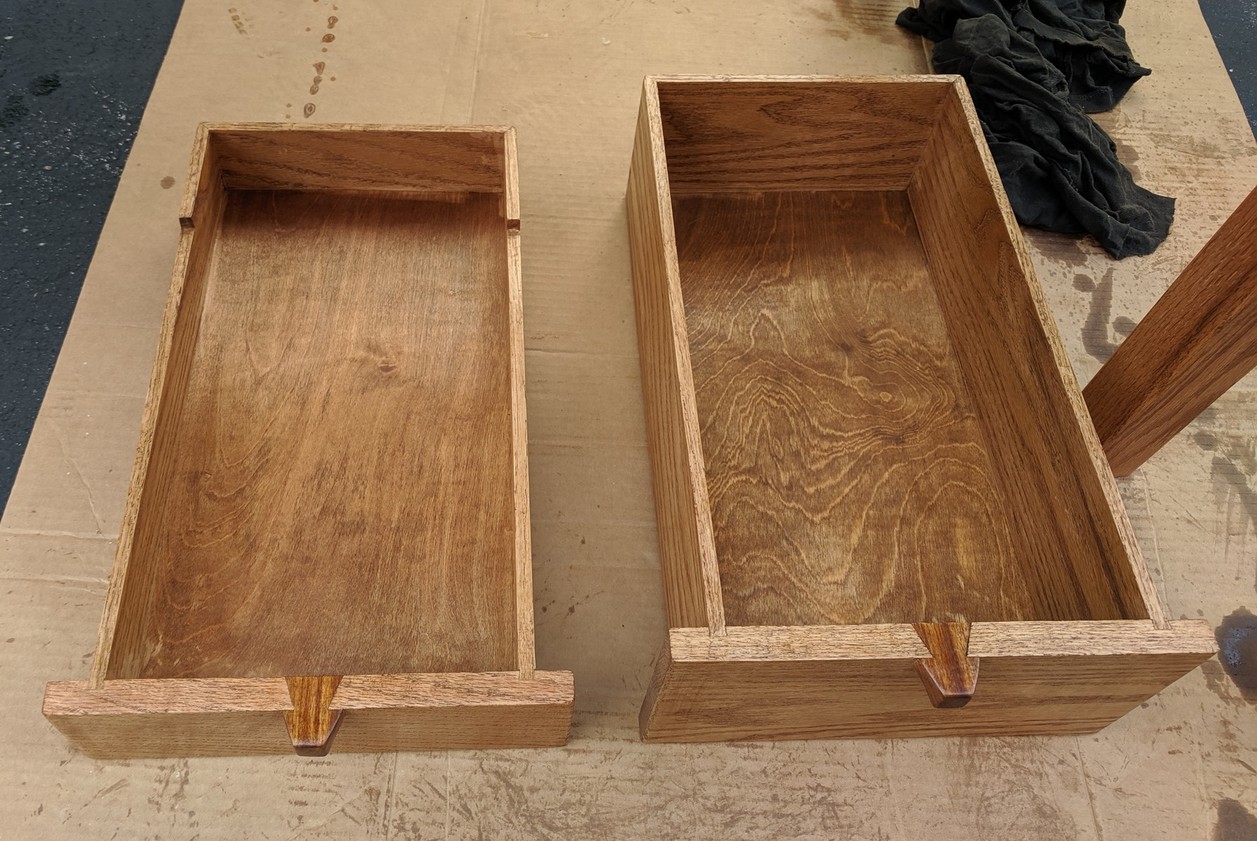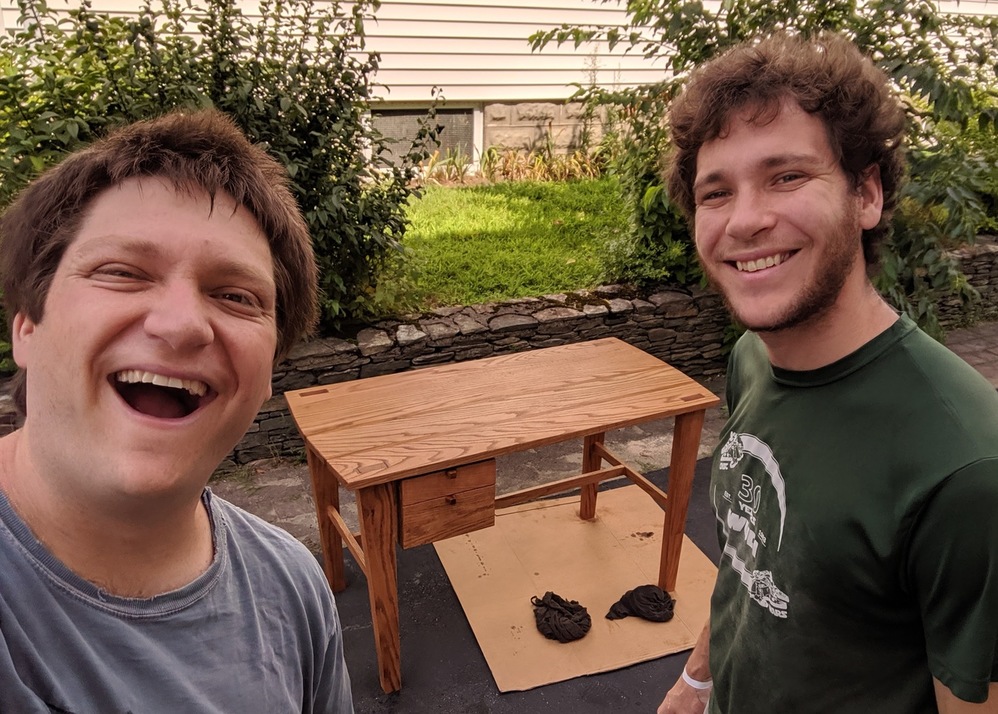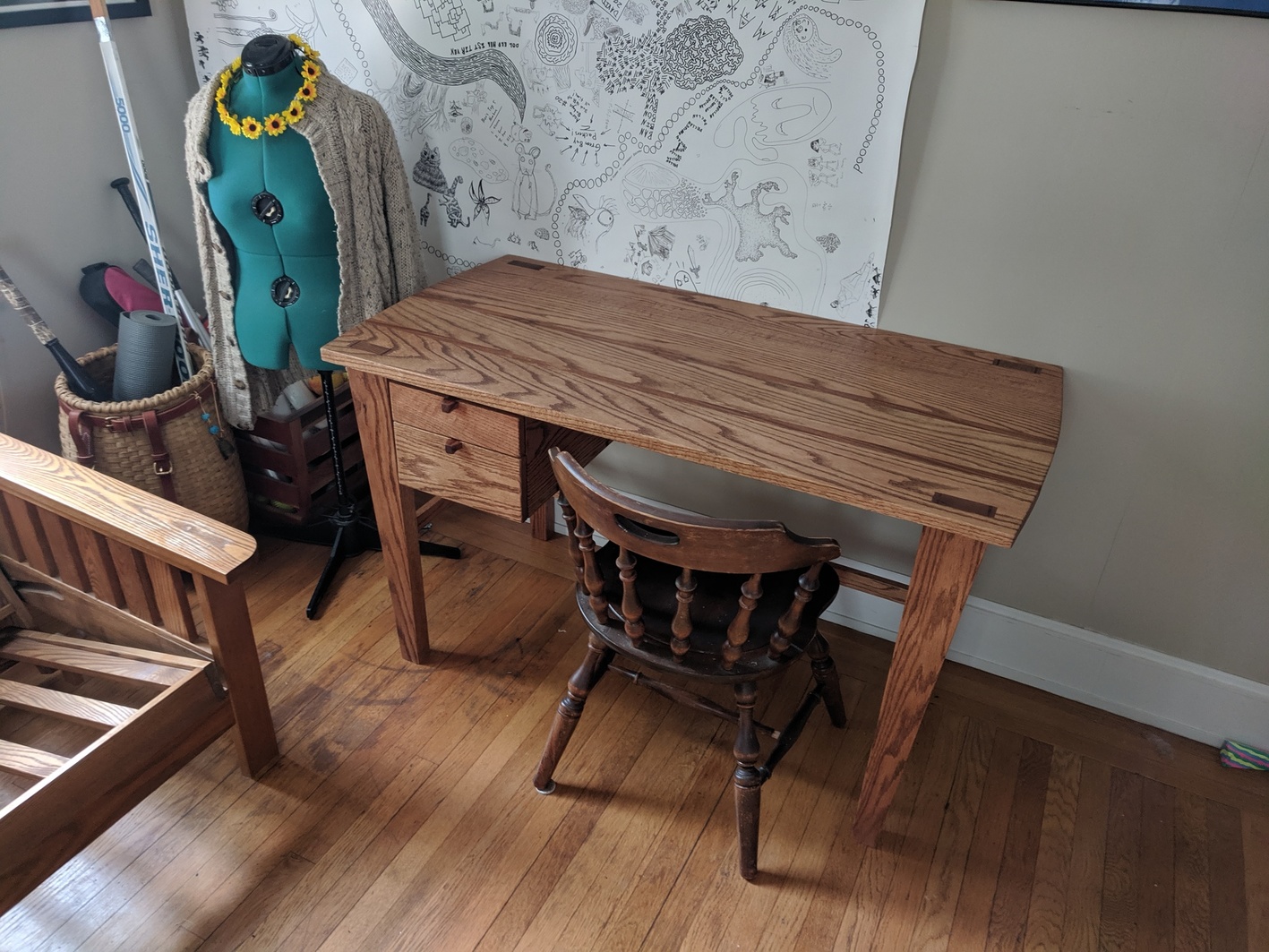You've Reached the Center of the Internet
It's a blog
Oak and Canarywood Desk

Matt and I just finished our greatest woodworking project yet! We designed and built a desk for Liz out of red oak with canarywood highlights. It took us about ten days, working most of each day. We started with a CAD design.

Here's what we came up with. The design featured a large edge joined top with two canarywood stripes in it. Showing through the top were through tenons from inward tapered legs. We also included a pair of small drawers, housed in a case which was suspended from the top with sliding dovetails. We hid the ends of the dovetail slot by gluing the top in two stages.
We used a long piece of canarywood for accents all over. Thanks to Bruce and Eileen for the canarywood board!

We loaded up the car with tools stored at Mom and Dad's and headed to my house in Providence, where we set up a temporary shop in my landlord's garage. On the way, we snapped up a $50 router table off of a Craigslist in White Plains.

First, we laid out the top from 5/4 red oak boards and canary wood ripped to 5/4 slices.
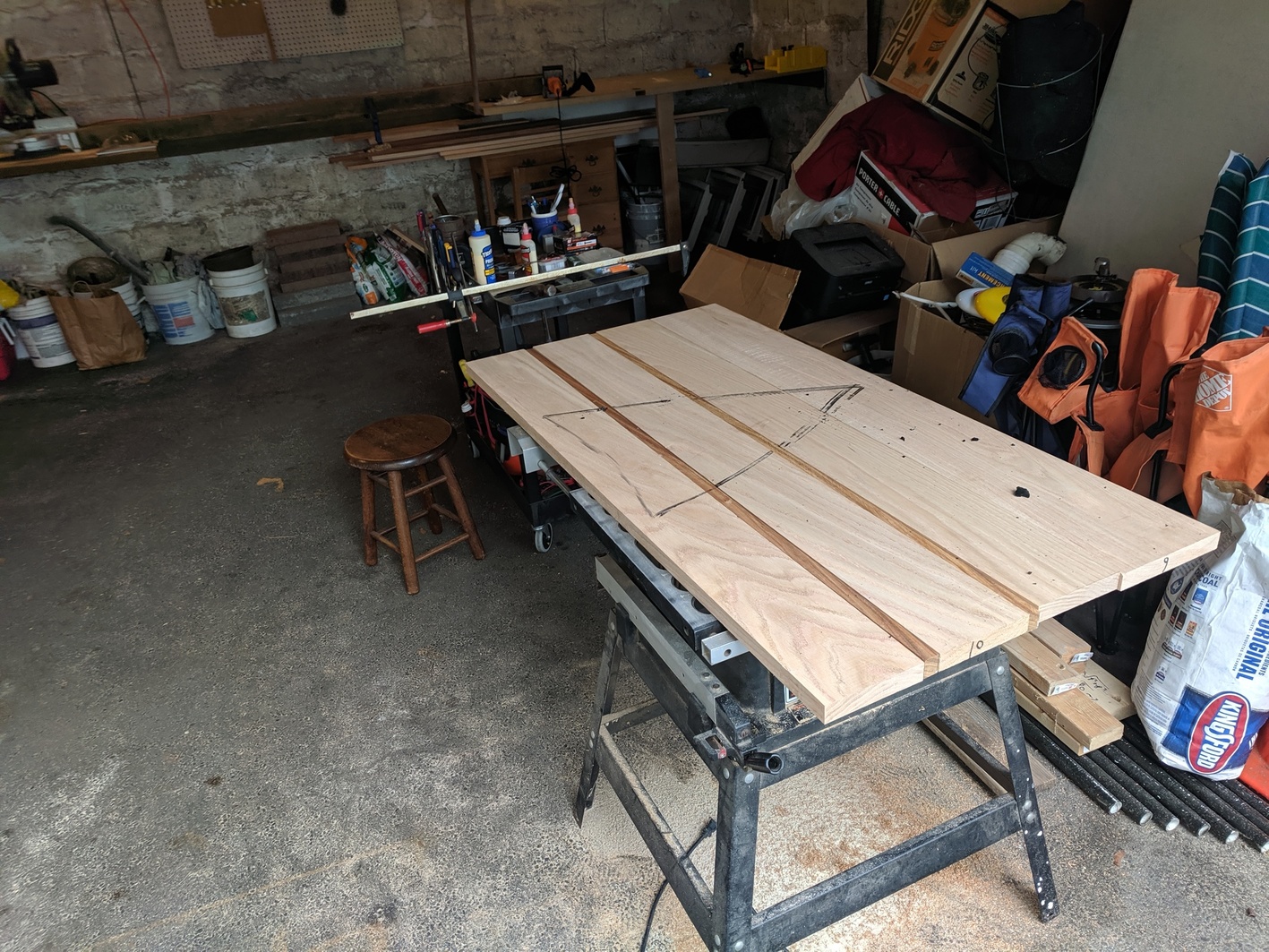
We edge joined the front part of the top, leaving the last board out for now. Once the glue had dried, we cut two long dovetail slots which ended a few inches from the front edge. These slots would receive the drawer case and would be hidden once we edge joined the final board.
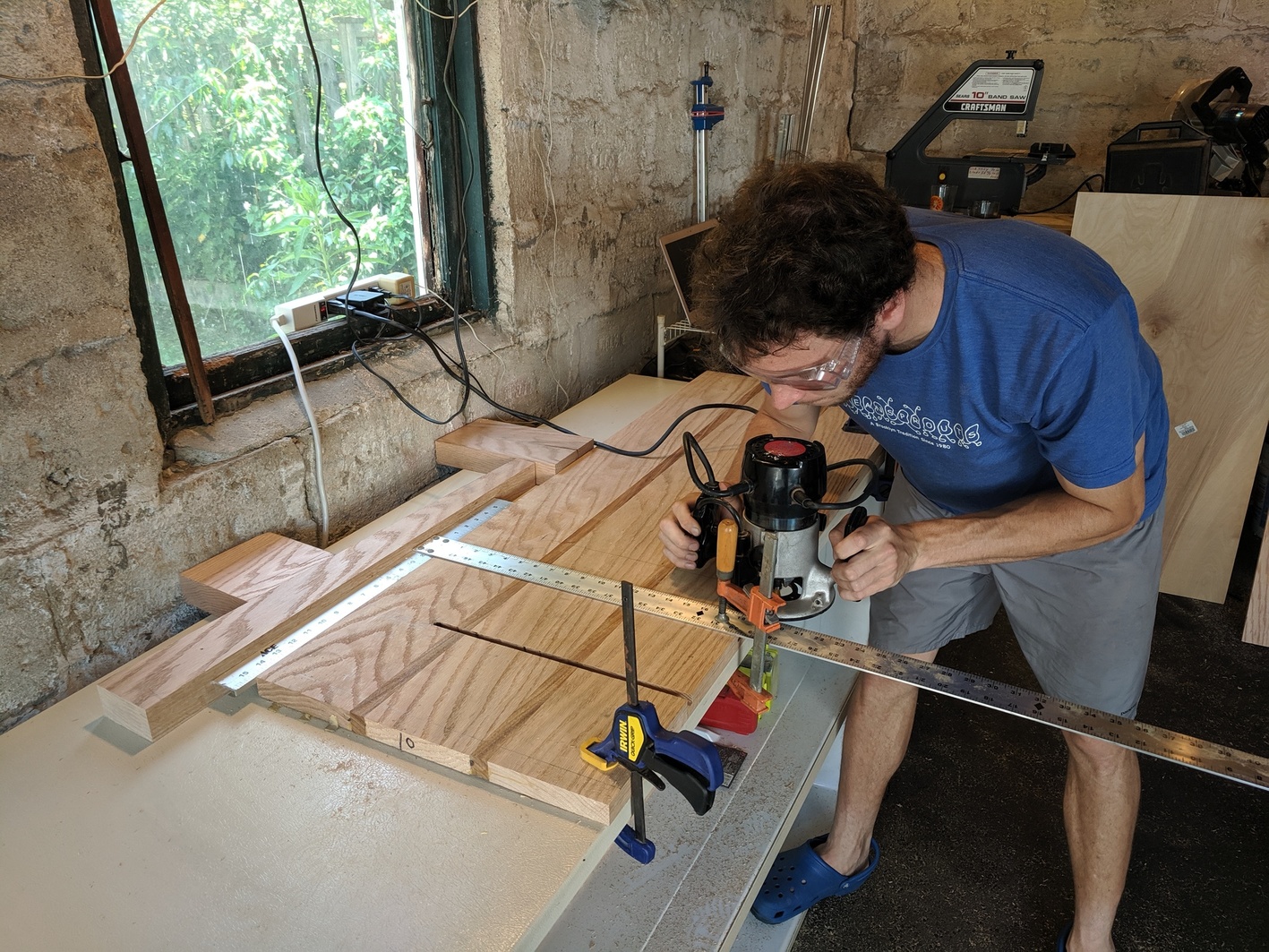
Next, we built the case for the drawers. Our design called for miter joints on the bottom corners and sliding dovetails on top. A shelf to support the second drawer would slide into a dado. We ripped 1x12 red oak boards to size, and cut the sliding dovetail into the top edge using our new router table. We made the dado and miters on the table saw. We also cut 2" oak boards to length for the legs and tapered them on the table saw.
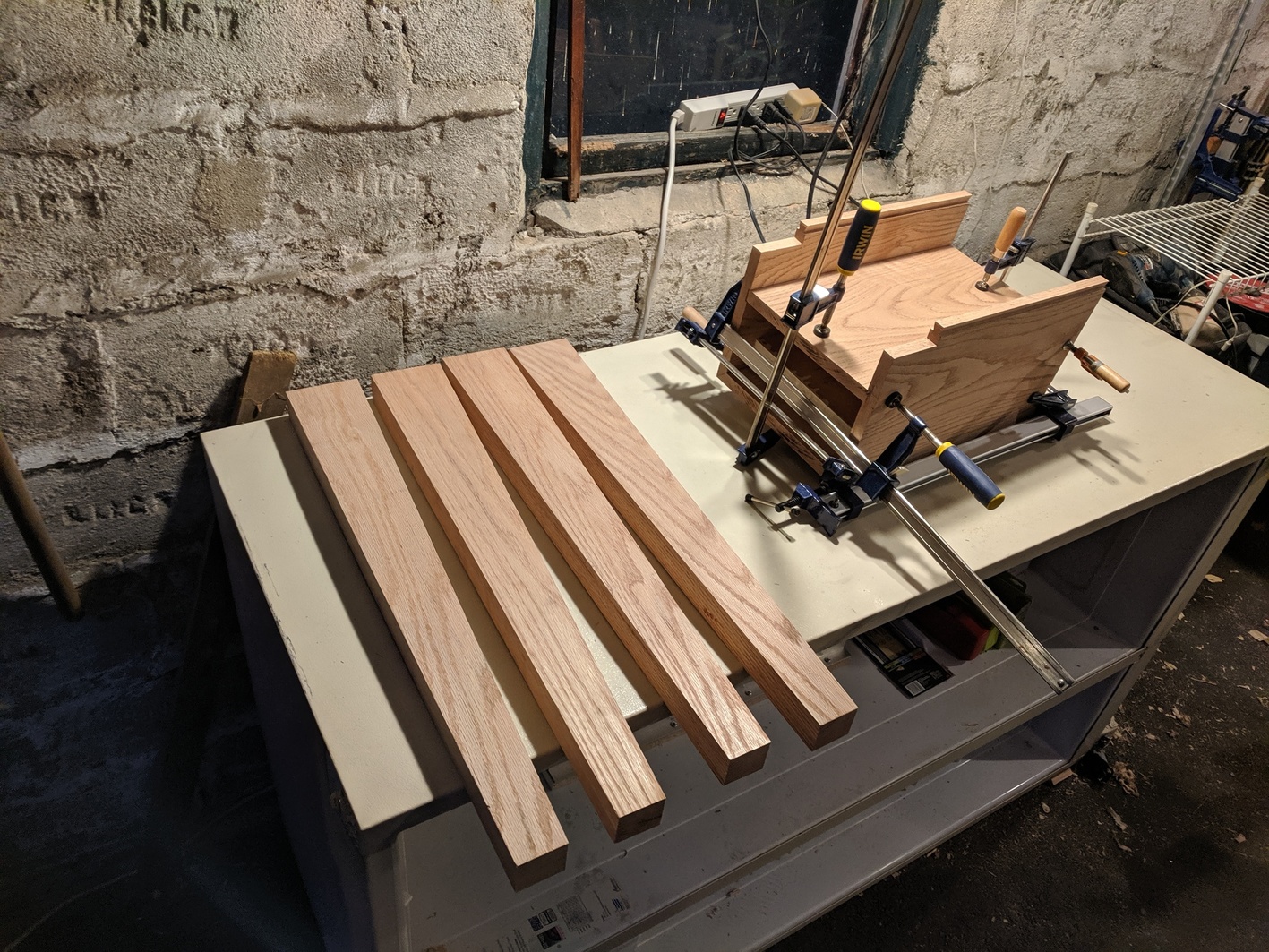
Our design had these dovetails running with the grain of the wood, and we started thinking about their durability. A few experiments showed them to be spookily fragile. Paranoid, we drilled holes and knocked in some dowels. Not sure if this even makes a difference. Maybe it made them weaker.

We strengthened each miter joint with a pair of dovetailed splines. A router table jig helped us cut slots into the corners. We used canarywood for the splines themselves.
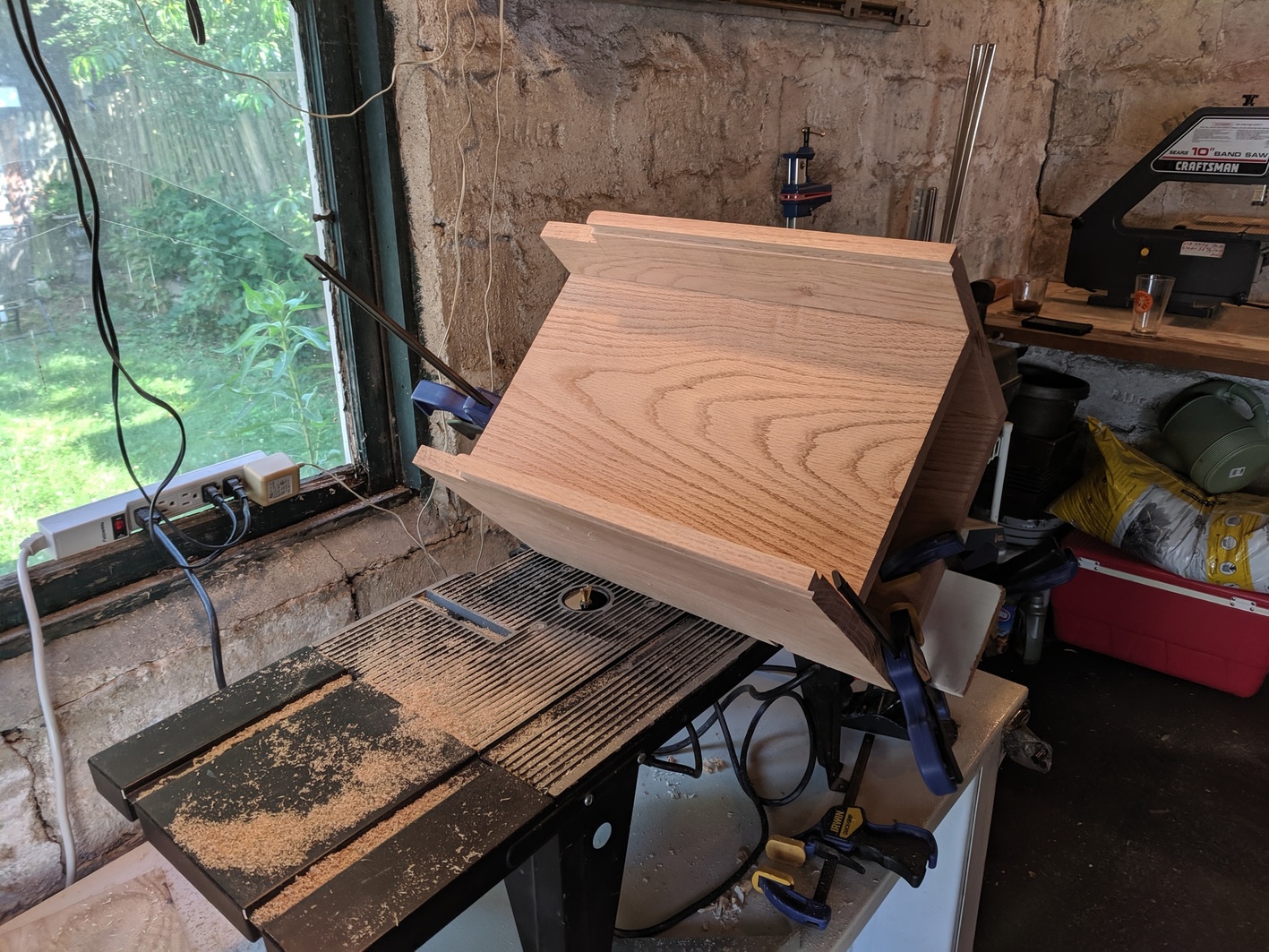
After the glue dried, we cut off the excess and planed the splines flat. We were very happy with the results.
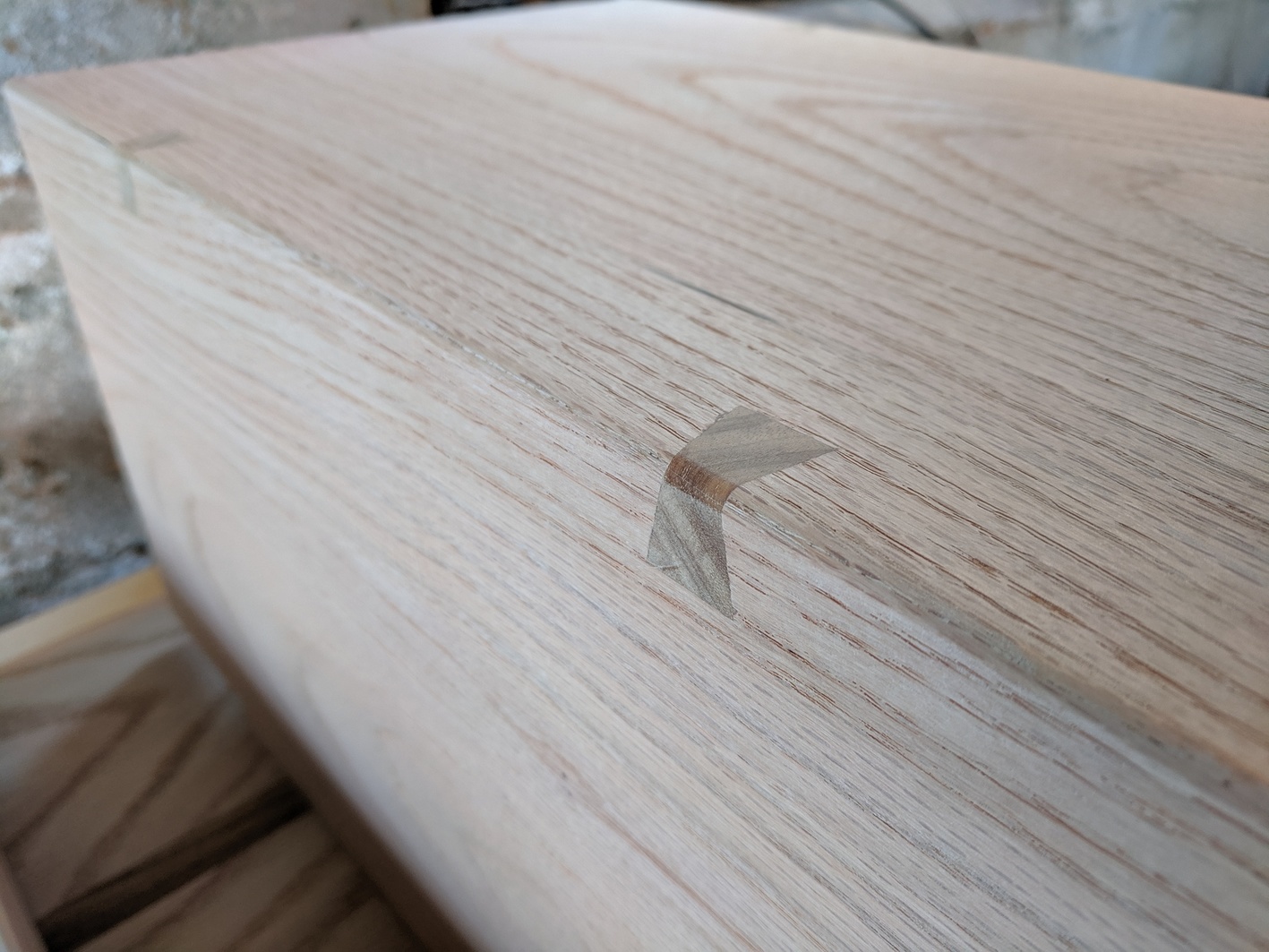
We slid the drawer case into the slots in the top and edge joined the last board in place.
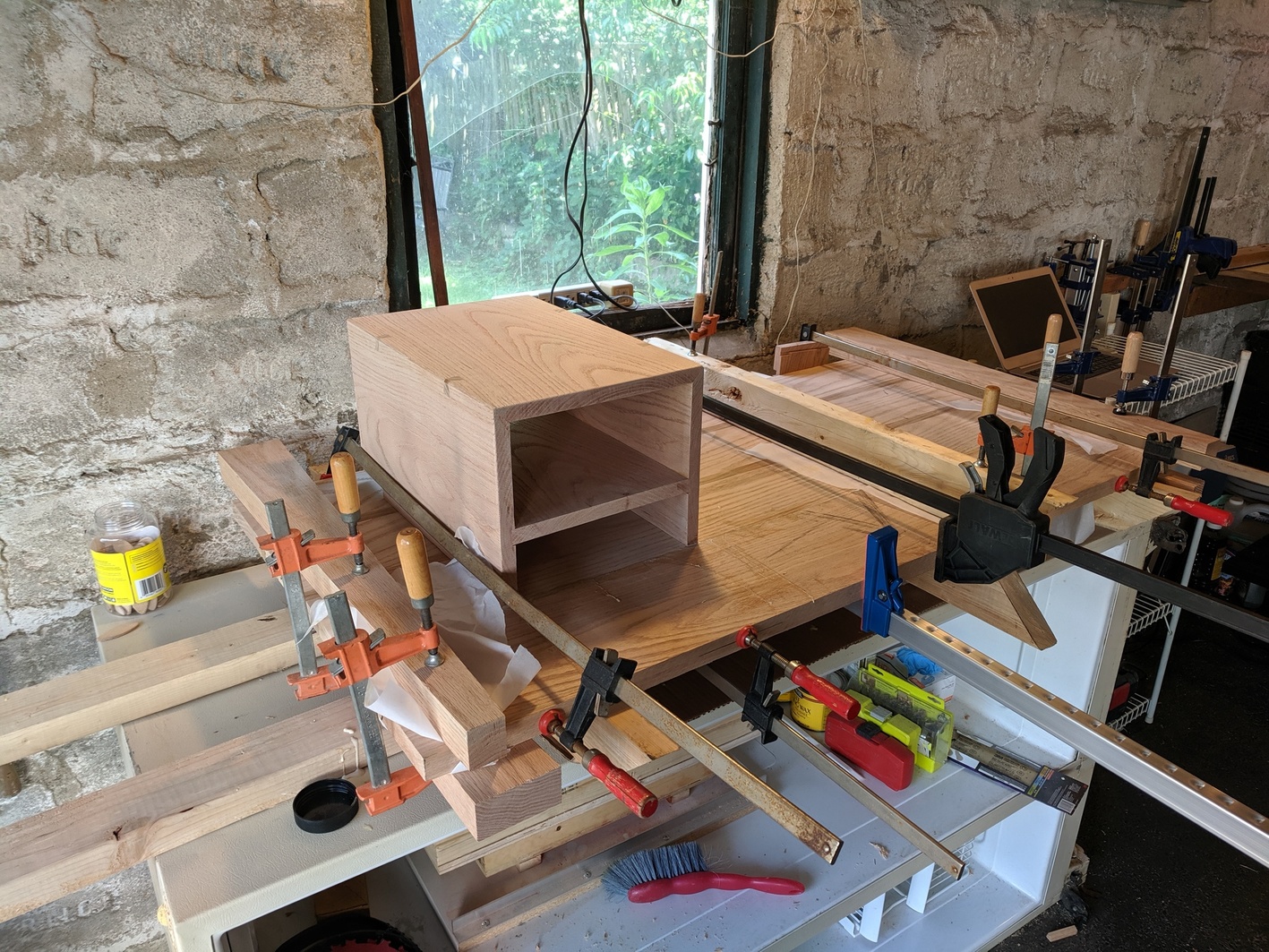
We cut through mortises into the top and tenons into the legs. The ends of the tenons would be prominent, so we drove two canarywood wedges into each. We also put together the stretchers with mortises and tenons.
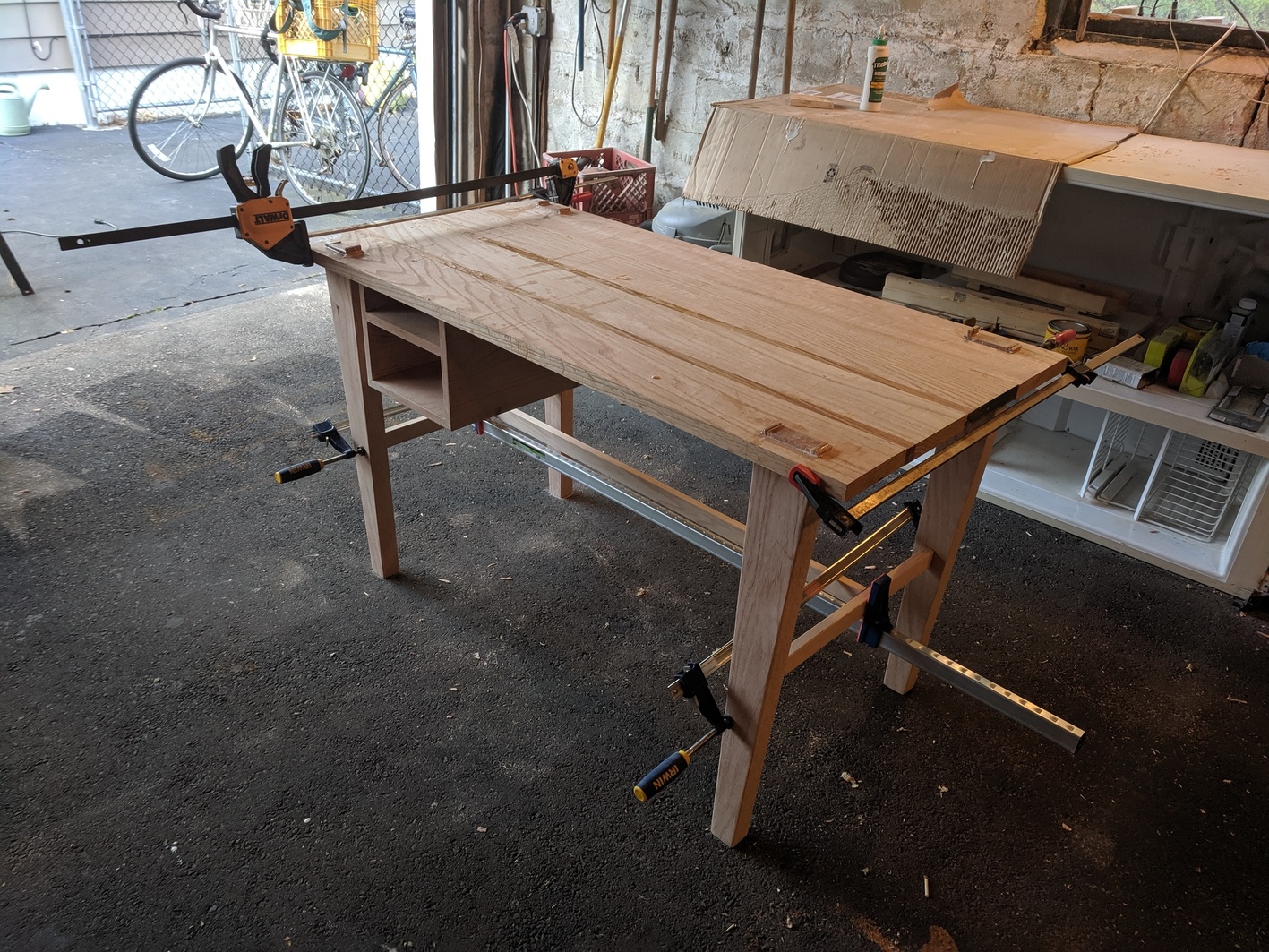
Drawer time. We used our router based planer to thin a bunch of 1" thick stock to 3/8". This was unpleasant and didn't work very well. We had trouble finding good ways to clamp the work, and the thickness varied as a result.
We designed the drawers with the same basic construction as the drawer case. Sliding dovetails on one end, splined miter joints on the other.
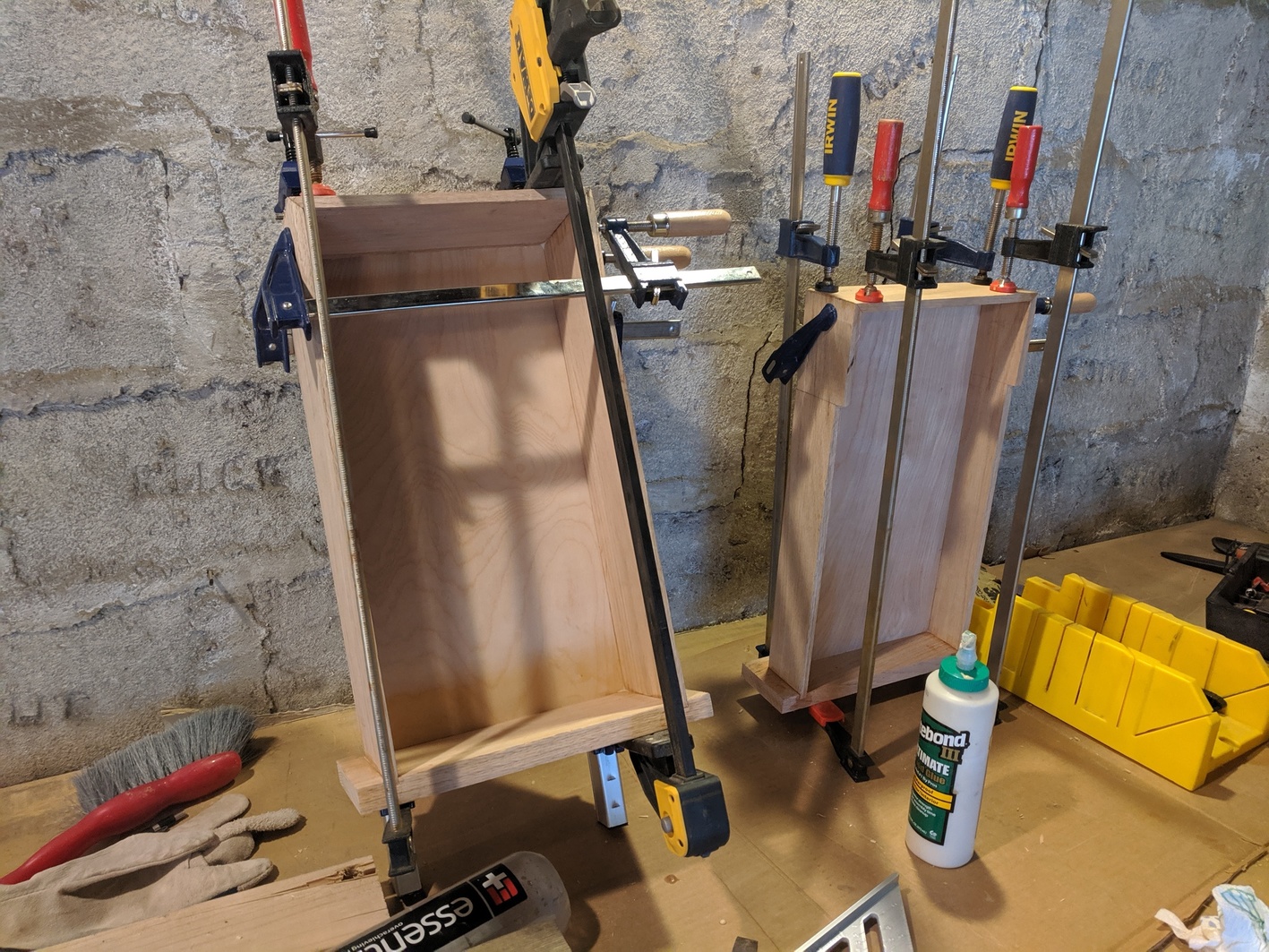
We hand carved some nice drawer pulls, too. Used the band saw to rough them out and then chisels and sand paper to get the shape we wanted. The pulls connected to the drawers with one large dovetail each.
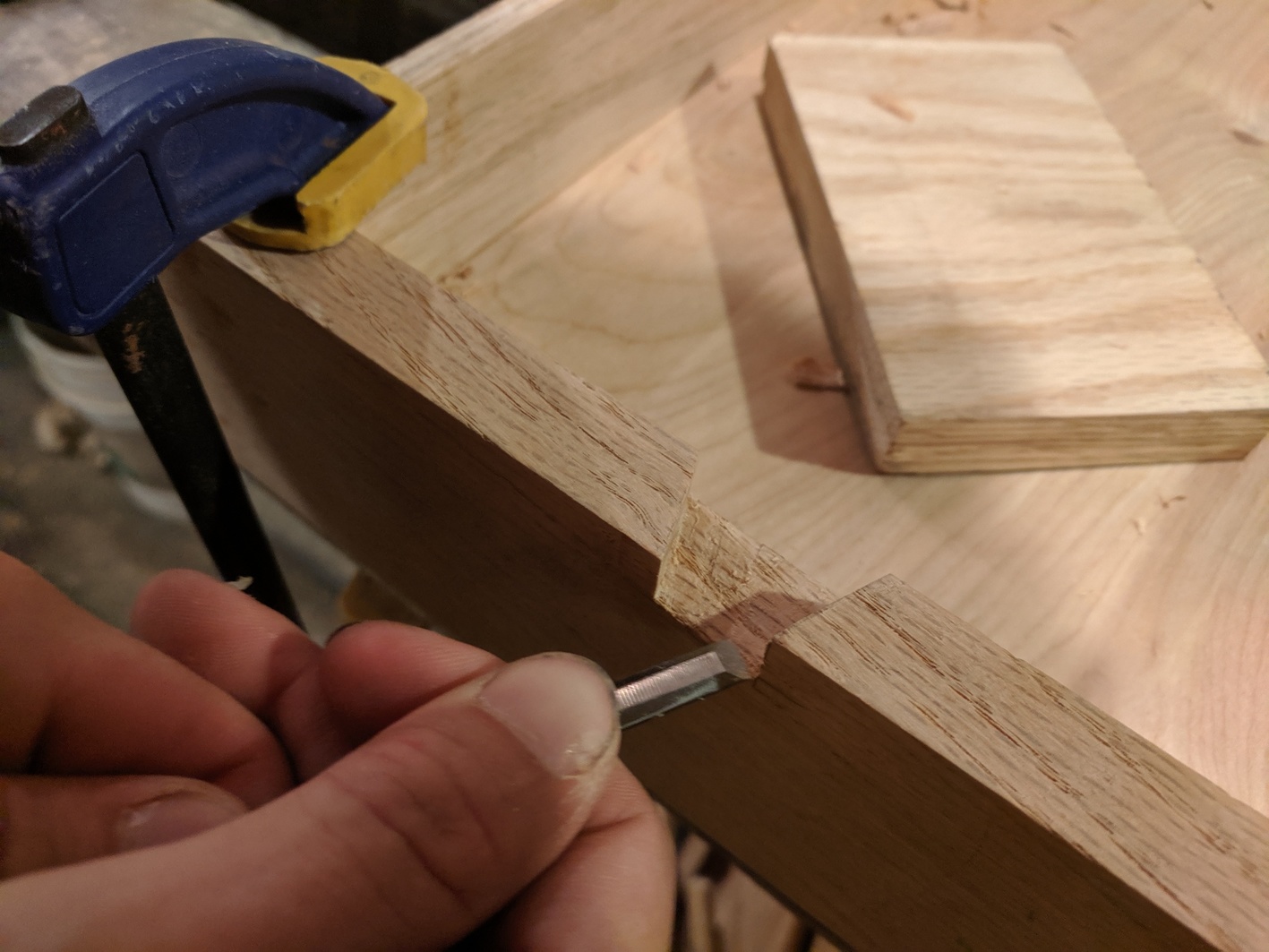

We planed the top flat and sanded everything.
Looks pretty good, if you ask me!
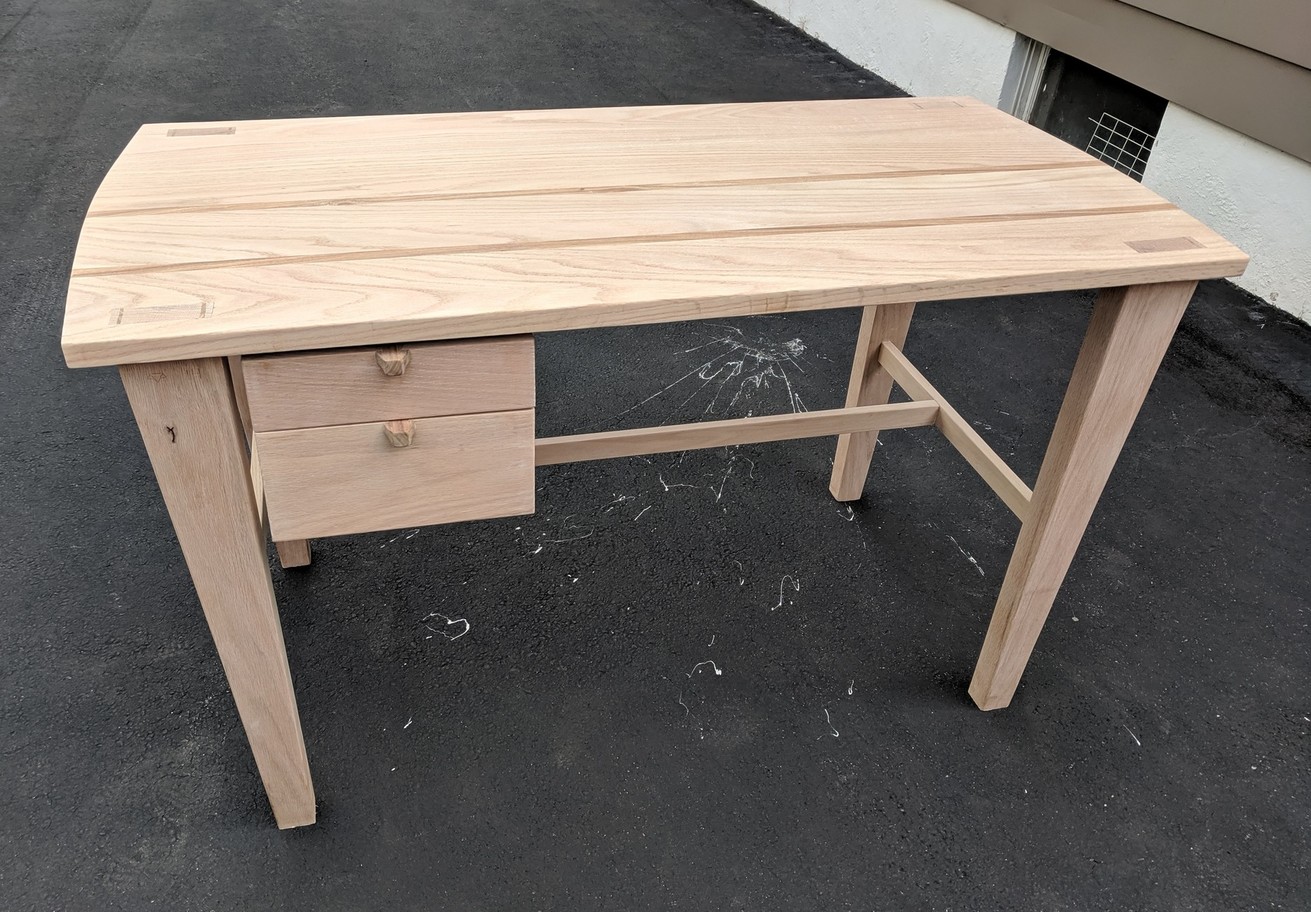
We finished the project with several coats of danish oil.
